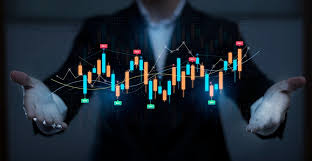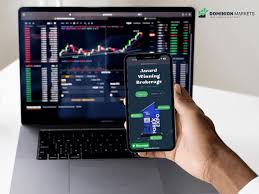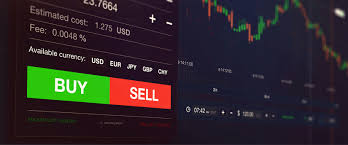
In the rapidly evolving world of finance, automated trading has become a game-changer, especially in the forex market. automated trading forex Online Trading CM allows traders to optimize their strategies and seize opportunities that would be difficult to achieve through manual trading alone. This article delves into the intricacies of automated trading in forex, discussing its benefits, challenges, and the technology behind it.
What is Automated Trading?
Automated trading, also known as algorithmic trading, refers to the use of computer programs and algorithms to execute trades in the financial markets without human intervention. These systems analyze market data, identify trading opportunities, and execute trades based on predetermined criteria. In forex trading, automated systems are designed to capitalize on price fluctuations and market inefficiencies, allowing traders to potentially generate profits without the need for constant monitoring.
The Advantages of Automated Forex Trading
One of the most significant advantages of automated trading in forex is the ability to operate 24/5. The forex market is open 24 hours a day, five days a week, and automated systems can continuously scan the market for opportunities at any time. This round-the-clock operation ensures that traders do not miss potential trades due to time constraints.
1. Emotion-Free Trading
Automated trading removes the emotional aspect of trading. Traders often struggle with fear and greed, leading to irrational decisions. With an automated system, trades are executed based on data and algorithms, which eliminates the emotional biases that can negatively impact trading performance.
2. Backtesting Capabilities
Automated trading systems allow for backtesting, which enables traders to evaluate the effectiveness of a trading strategy using historical data. By simulating various market conditions, traders can gain insights into how their strategies perform and make necessary adjustments before risking real money.
3. Increased Efficiency
Time is a valuable resource in trading, and automated systems can analyze vast amounts of data in seconds, something a human trader cannot match. This efficiency enables traders to identify profitable opportunities and execute trades in real time, reducing the risk of missing out on market movements.

Challenges of Automated Trading
Despite its many advantages, automated trading is not without challenges. Traders must be aware of the potential pitfalls associated with relying solely on automated systems.
1. Technical Issues
Automated trading heavily relies on technology. A malfunctioning trading algorithm, network issues, or server downtime can lead to missed trades or losses. Traders must ensure that their systems are regularly maintained and updated to mitigate these risks.
2. Over-Optimization
While backtesting is an essential feature of automated trading, traders must avoid over-optimization. This occurs when a strategy is overly tailored to historical data, leading to poor performance in real-time market conditions. Striking a balance between optimizing a strategy and maintaining its adaptability is crucial.
3. Market Conditions
Automated trading systems are typically programmed for specific market conditions. Sudden changes in the market due to economic news, geopolitical events, or unexpected volatility can render a trading strategy ineffective. Traders should remain vigilant and be prepared to intervene if necessary.
Choosing an Automated Trading System
With numerous automated trading systems available in the market, it is essential for traders to select a platform that aligns with their trading style and goals. Here are some essential factors to consider when choosing an automated trading system:
1. User-Friendliness
A good automated trading system should be user-friendly, allowing traders to easily navigate the platform and customize their trading parameters. This accessibility is particularly important for those who may not have extensive technical knowledge.
2. System Reliability

Traders must research the reliability and track record of an automated trading system. Reviewing user testimonials, performance metrics, and any available independent audits can help assess the credibility of the platform.
3. Cost
Different automated trading systems come with various pricing structures. Traders should consider the costs associated with subscriptions, commissions, and any additional fees that may apply. It is essential to weigh the potential returns against the expenses incurred.
Best Practices for Automated Forex Trading
To maximize the benefits of automated trading while minimizing risks, traders should implement best practices. Here are some recommendations:
1. Start with a Demo Account
Before deploying an automated trading system with real money, traders should consider testing their strategies in a demo account. This practice allows traders to evaluate the performance of their system in a risk-free environment.
2. Monitor Performance
Even though automated trading systems operate independently, traders should regularly monitor their performance. Keeping track of trades, analyzing results, and assessing the effectiveness of strategies are essential to ensure continued success.
3. Stay Informed
Markets are constantly evolving, and traders should stay informed about economic news, market trends, and geopolitical developments that could impact their trading strategies. Incorporating this knowledge into the decision-making process can enhance the effectiveness of automated systems.
Conclusion
Automated trading in the forex market offers numerous advantages, such as enhanced efficiency, emotion-free trading, and the ability to operate around the clock. However, it is crucial for traders to be aware of the associated challenges and make informed decisions when selecting and utilizing automated trading systems. By implementing best practices and staying informed, traders can harness the power of automated trading to improve their forex trading strategies and achieve their financial goals.